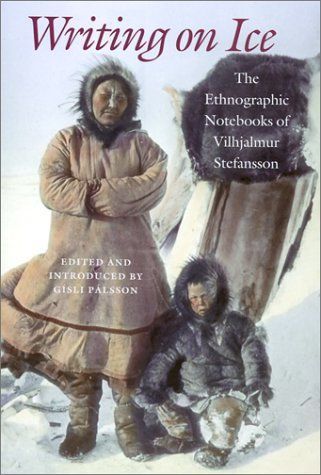
Writing on Ice The Ethnographic Notebooks of Vilhjalmur Stefansson
Between 1906 and 1918, anthropologist and explorer Vilhjalmur Stefansson went on three long expeditions to the Alaskan and Canadian Arctic. He wrote voluminously about his travels and observations, as did others. Stefansson's fame was partly fueled by a series of controversies involving envious competitors in the race for public recognition. While many anthropological works refer to his writings and he continues to be cited in ethnographic and historical works on indigenous peoples of the North American Arctic, particularly the Inuit, his successes in exploration (the discovery and mapping of some of the last remaining land on earth) have overshadowed his anthropological work. Writing on Ice utilizes his extensive fieldwork diaries, now in Dartmouth's Special Collections, and contemporary photographs and sketches, some never before published, to bring to life the anthropology of the Arctic explorer. Gísli Pálsson situates the diaries in the context of that era's anthropological practice, early 20th-century expeditionary power relations, and the North American community surrounding Stefansson. He also examines the tension between the rhetoric of ethnography and exploration (the notion of the "friendly Arctic") and the reality of fieldwork and exploration, partly with reference to Stefansson's silence about his Inuit family.